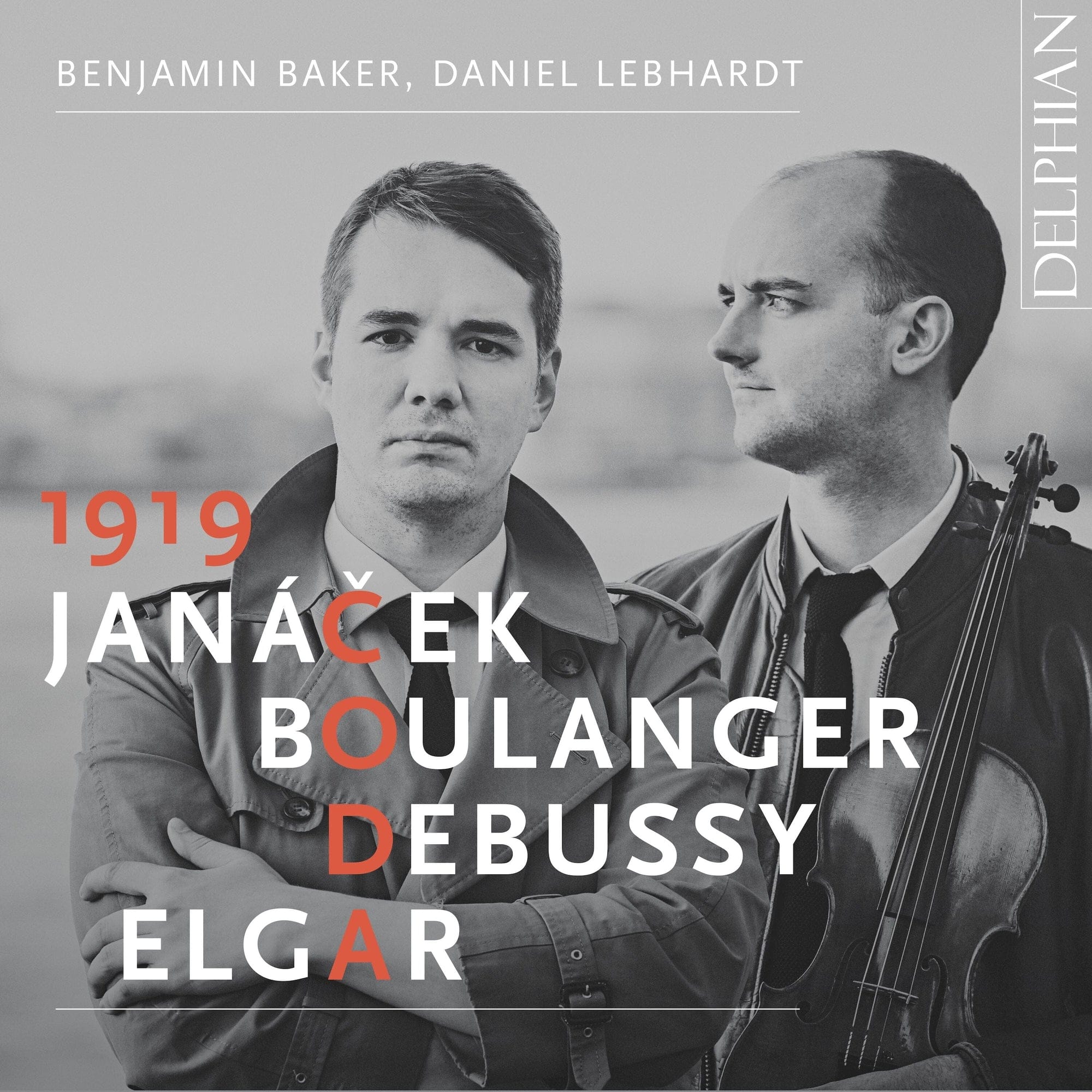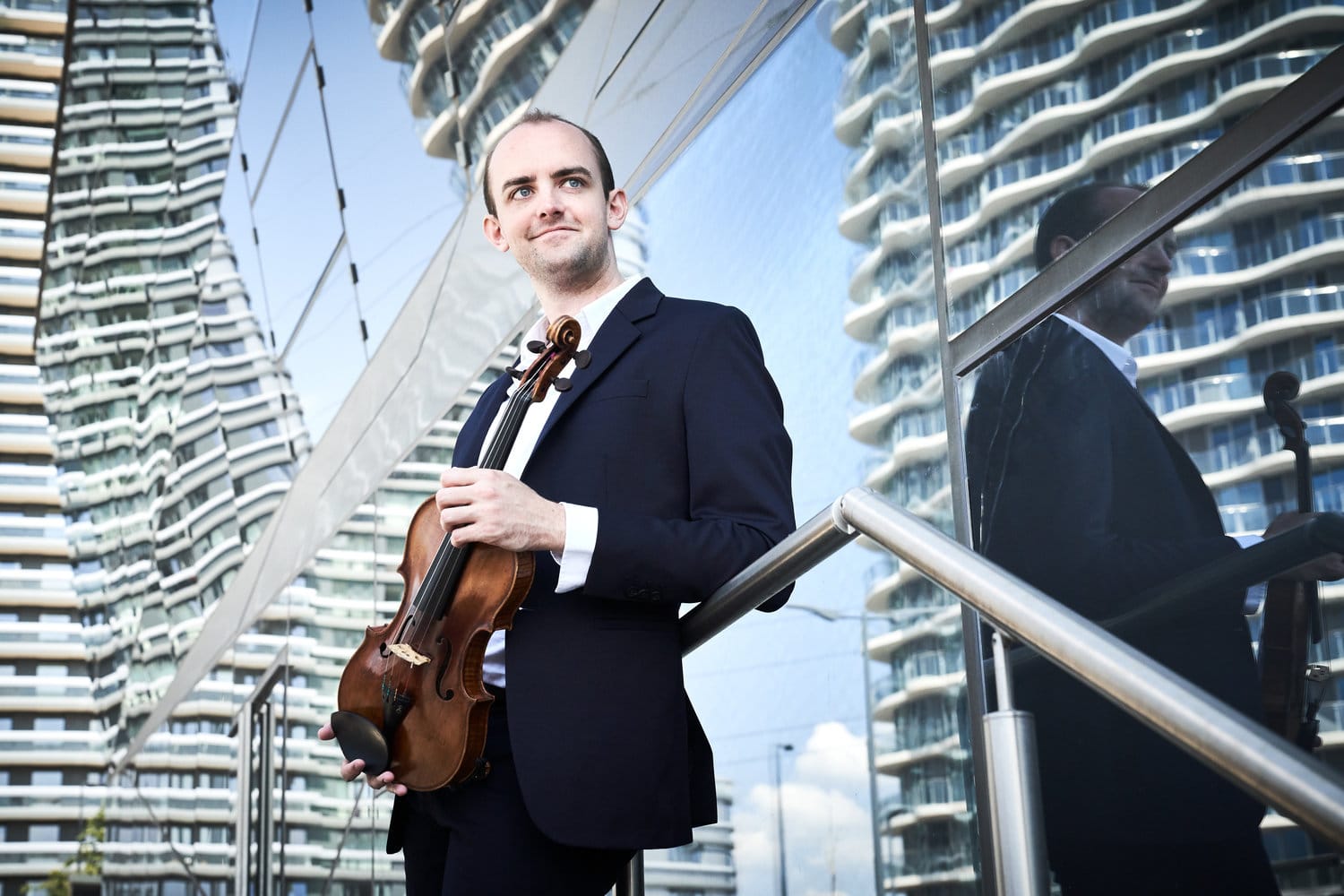
Three violin sonatas, all from their respective composers’ late periods, form the focus of this fascinating disc. 1919 is of course just post-World War I, and it is true that, rather like the extrapolation of “CODA” from the letters of the composers’ names, the disc title has to do a touch of hard work: Debussy, after all, died in 1918, as did the Boulanger du jour, Lili.
Still, there is no doubt this is a tremendous programme of music per se. And it is good that Benjamin Baker and Daniel Lebhardt begin with Janáček’s magnificent Sonata (completed 1922!). This is a major piece but not easy: not easy to play, and not easy to listen to, either. Janáček’s world is markedly gestural, and the players embrace that aspect of his art wholeheartedly. Here’s a video of the first movement:
e
There is a real passion to Baker’s playing, and his intonation, even up high, is spot-on. The twitchy, nervous aspect of the piano par is brilliantly conveyed by Lebhardt, The slow movement is a “Ballada,” its theme based on the folk music of Janáček’s youth, the municipality of Hukvaldy and it is simply lovely. Baker’s violin sings wonderfully. You can supplement the iDagio/Spotify links t the disc below with this, a live performance by these performers from Wigmore Hall in September, 2017:
Nowhere in this Sonata is Janáčk more Janáček than in the arresting gestures of the Allegretto (such an innocent direction for such powerful music!). Nigel Simeone, in his excellent notes, suggests that there are hints of Kabanová here. Again, here’s the Wigmore performance:
The finale is marked as “Adagio,” but as so often with Janáčk, that’s only half of the story. Tenderness is contrasted with the marking “feroce” (ferociously) in a remarkable formal construction. Baker and Lebhardt’s is one of the finest available versions.
Interestingly, the fragrant “Nocturne,” the first of Two Pieces by short-lived Lili Boulager (1893-1918), There are even hints of Debussy’s faun here. Lili (as opposed to Nadia) was the first woman to win the Prix de Rome. The brief “Cortège” follows, by no means as serious as its title implies.
So to Debussy’s late Violin Sonata, a masterpiece unlike any other. It has inspired a raft of excellent performances. There is a host of great performances of this piece (Zino Francescatti with Roert Casadesus, Szigeti – with Bartók! – Kynug-Wha Chung and Radu Lupu on Decca) but with such fine, virtuoso playing so well attuned to Debussy, it is hard to resist this one. Lebhardt’s touch is finely calibrated, and Baer’s attack and phrasing is beyond criticism. The central “Intermède” is properly fantastical; the finale, as Debussy directs, properly animated (“Très animé”). As the booklet notes remind us, Debussy himself was the pianist in the first performance of this epoch-making piece, with violinist Gaston Poulet: that was Debussy’s last public appearance.
For those that don’t yet know Debussy’s Violin Sonata, and like to follow along with a score, click here for just that, a performance by Sclomo Mintz and Yefim Bronfman.

Another trip to the Boulangerie finishes another interlude: Lili’s s D’un matin de Printemps, one of her more famous pieces. It is truly lovely, and here’s another score video (thee performers here are Yehudi Menuhin and Clifford Cirzon).
Bu it is teh Elgar Violin Sonata, Op. 82 that might be a revelation to some. Elgar’s chamber music, like his partings, is unjustly neglected. His Violin Sonata dates from 1918. The first movement is described by the composer himself as “bold and vigorous” and it is; both players properly dig in.
Th slow movement was written for Elgar’s friend “Windflower” (Alice Stuart-Wortley). he long melody was apparently a reaction to “Windflower“’s accident while working around Tintagel (a broken leg). The melody of this central movement is indeed magical. Here’s a live performance of the first and second movements by the present artists to complement the links below:
Elgar called the finale “very broad” and “Something like the finale of the Second Symphony”. The marking is “Allegro non troppo” and it is certainly “non troppo” here; and it works beautifully. Again, the finale of that live performance in the Young Concet Artists series (the recorded movements are a touch longer in all three cases, incidentally):
Let’s allow Baker and Lebhard an encore: Elgar’s Salut d’amour:
A fascinating disc, featuring well contrasted repertoire in excellent performances. The disc is available from Amazon here.. Streaming links below.

The Amazon listing is here; Spotify and iDagio below.











